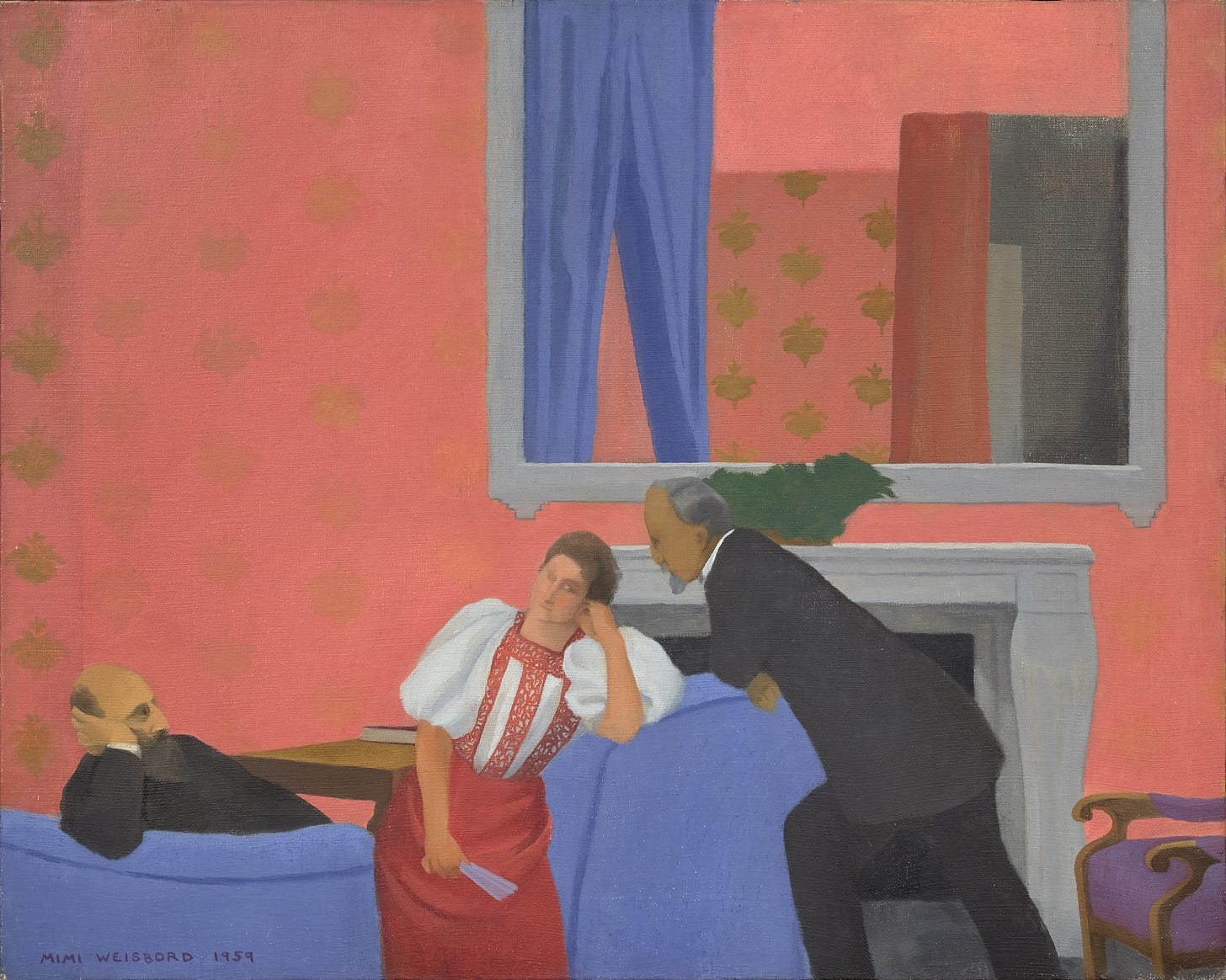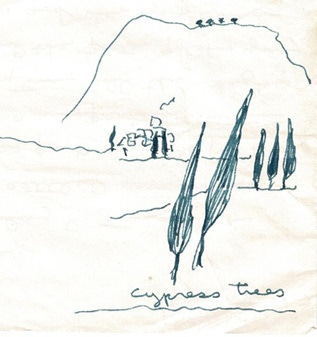Two Houses is a newsletter of stories about art, feminism, grief, and Time excavated from the Soho loft where I grew up. Posts are free and illustrated with the work of my long-divorced parents, the painters Mimi Weisbord and Lennart Anderson.
WHEN MY mother, Mimi Weisbord, died in 2020, it took us more than a year to begin digging out her loft in Soho. My spouse Kim and I stayed in Vermont, leaving my mother’s space untouched through the worst of the pandemic. Mimi had lived and painted there for 40 years. I dreaded re-entry.
But I did have that time to think about what I most wanted to find there.
In 2019, after my mother had moved into memory care, I discovered a bundle of my parents’ letters. They were written to my maternal grandparents and stuffed in an antique writing desk in the loft. My father, Lennart Anderson, had won the Rome Prize in 1958. They’d written home during the three years they lived and painted at the American Academy in Rome.
“We are sharing a studio, and it’s huge -- larger than the whole apartment in New York […]”
I knew my father’s work from that period but not my mother’s.
“He’s done about three little paintings and some drawings. [….] I’m now working on a large still life a la Rousseau.”
When we returned to the loft in 2021, I went directly to her painting closet.
IDENTIFYING HER work from Rome turned out to be relatively easy. The oldest canvases were nailed, not stapled to their stretchers. I scanned the racks, looking for rusty nail heads.
It was thrilling to pull out those pictures. Some in frames were dated, and I quickly realized that my brother and I had grown up with various of her Rome paintings hanging in the apartment she’d moved us to in Park Slope when she left my father in the early 70s.
One of these was Degas and the Halévys. It hung over our piano in both Park Slope and Soho. I didn’t know its subject until after my mother’s death when I held up its slide with a penciled title. For the daughter of long-divorced (and often warring) painters, it was a delightful discovery.
Lennart admired the French impressionist Edgar Degas. He talked about Degas often. But I never heard a peep about Degas from my mother. Dated 1959, Degas and the Halévys is from a time when my parents shared common purposes and pleasures.
They’d traveled to Europe as newlyweds; her art school fellowship had just concluded. My next post, “Woman in Black,” will consider some recent revelations about my mother and her work in the months before they married. But my purpose here is to share this little jewel of a painting.

I was reminded of this parlor scene because of the “Manet/Degas” show currently on view at the Metropolitan Museum of Art. (Kim and I are headed to NYC for Thanksgiving.) On the Met’s website is a podcast about Degas and Manet’s friendship and their falling out over a painting of a parlor scene. Mimi’s parlor scene, however, is inspired by Degas’ friendship with the writer Ludovic Halévy and his wife Louise. (Thank you, Internet.)
In childhood, I once overheard my mother say this painting was influenced by her love for the theater. I understood what she meant because of its stage-like depth of field. In hindsight, that moment was important. I saw how she had her own way as a painter, different from my father.
Revisiting this painting and its theatrical composition, I recalled something from their letters. On their way to Rome, just months before this picture was painted, they spent a week in London.
“The art museums were terrific, and we went to the theater every night,” Mimi writes.
Lines from their letters and paintings conspire with memories, photos, and journal entries to bloom their fuller lives out from all her hoarding.
It’s moving for me to see my parents come together when, for so long, they were only split apart.
MY NEXT post includes pictures painted in Rome by each of them.
Who influenced whom? I have reason to wonder.





Beautiful painting, beautiful story telling!
So wonderful - thanks so much for letting us all share in this.